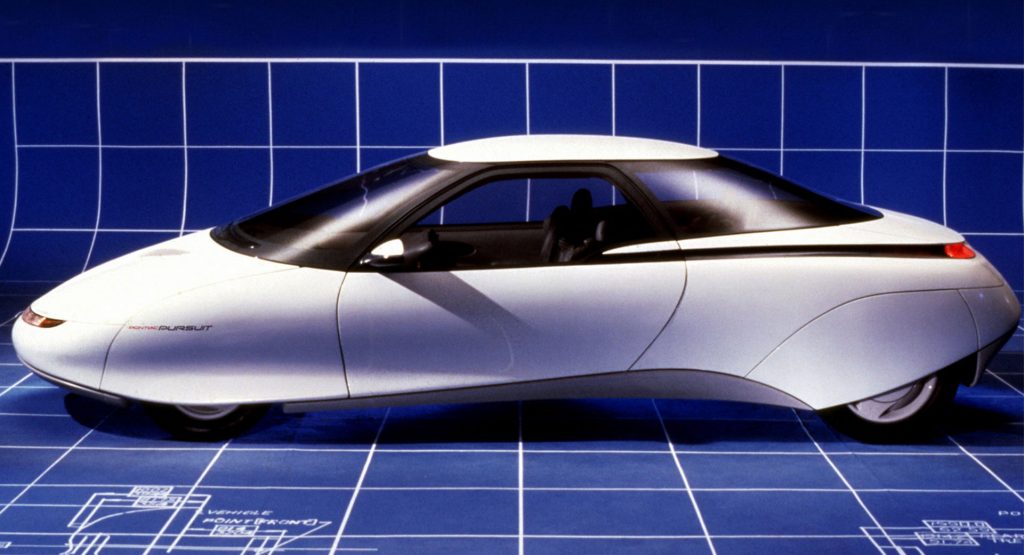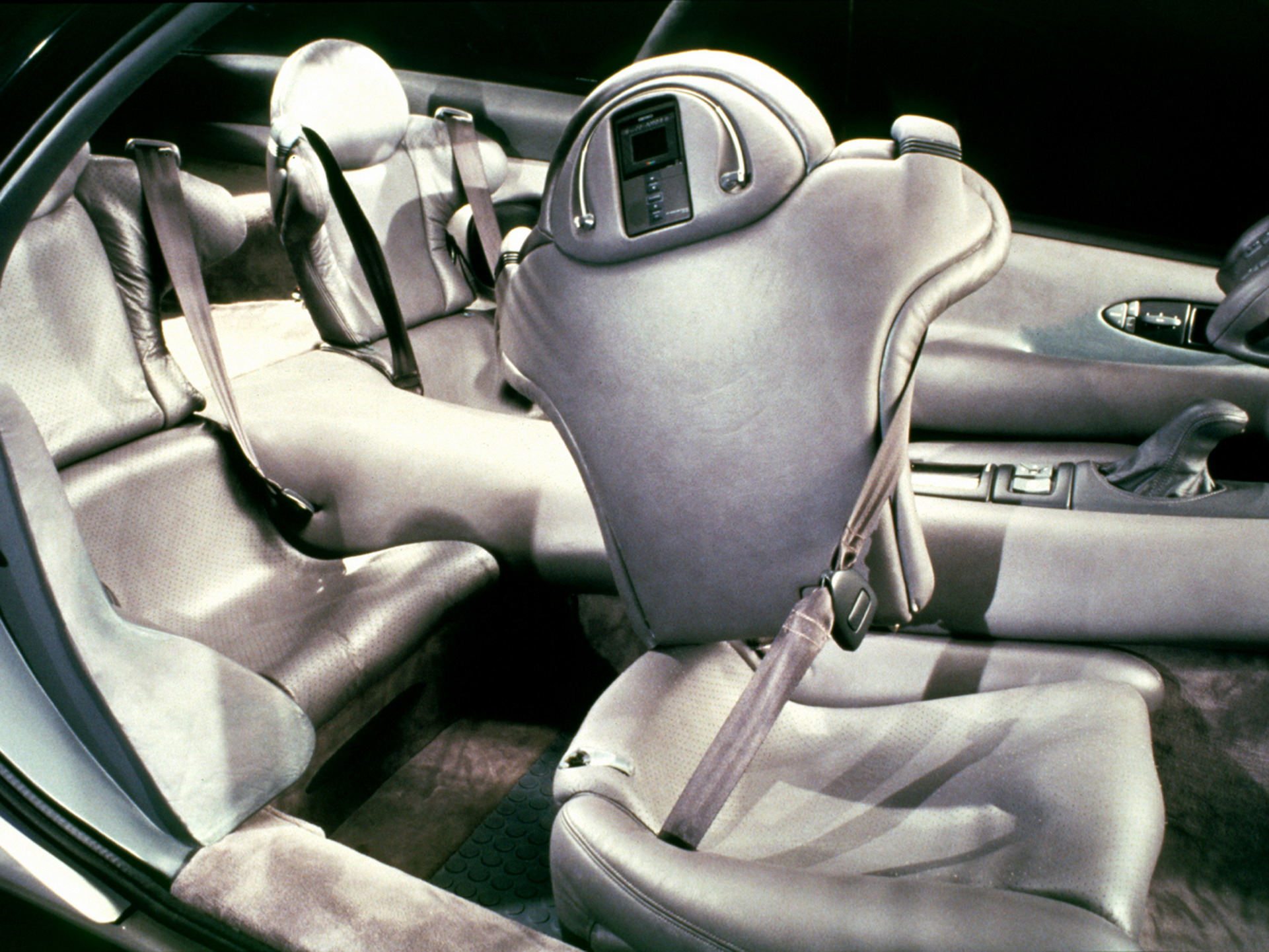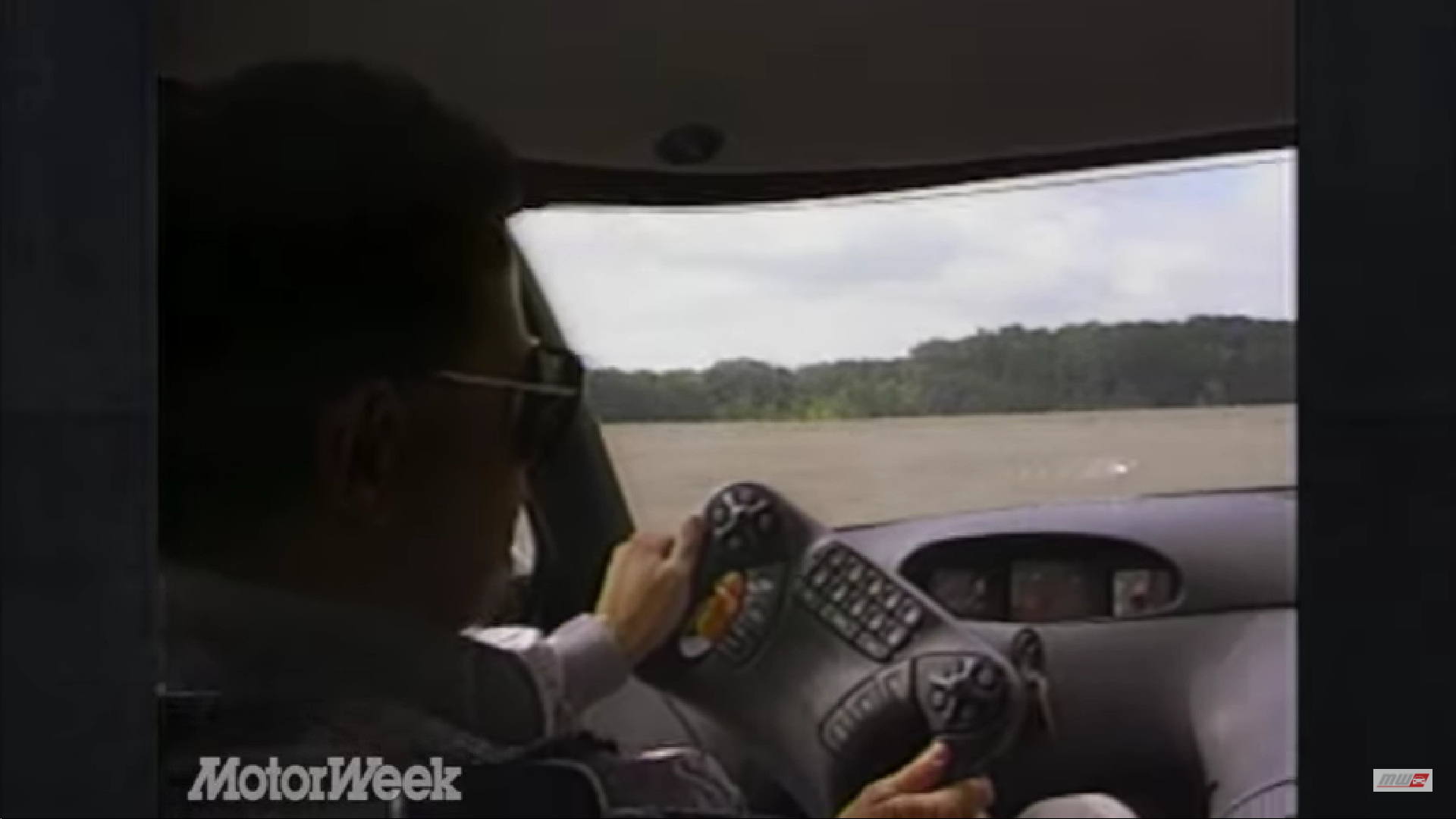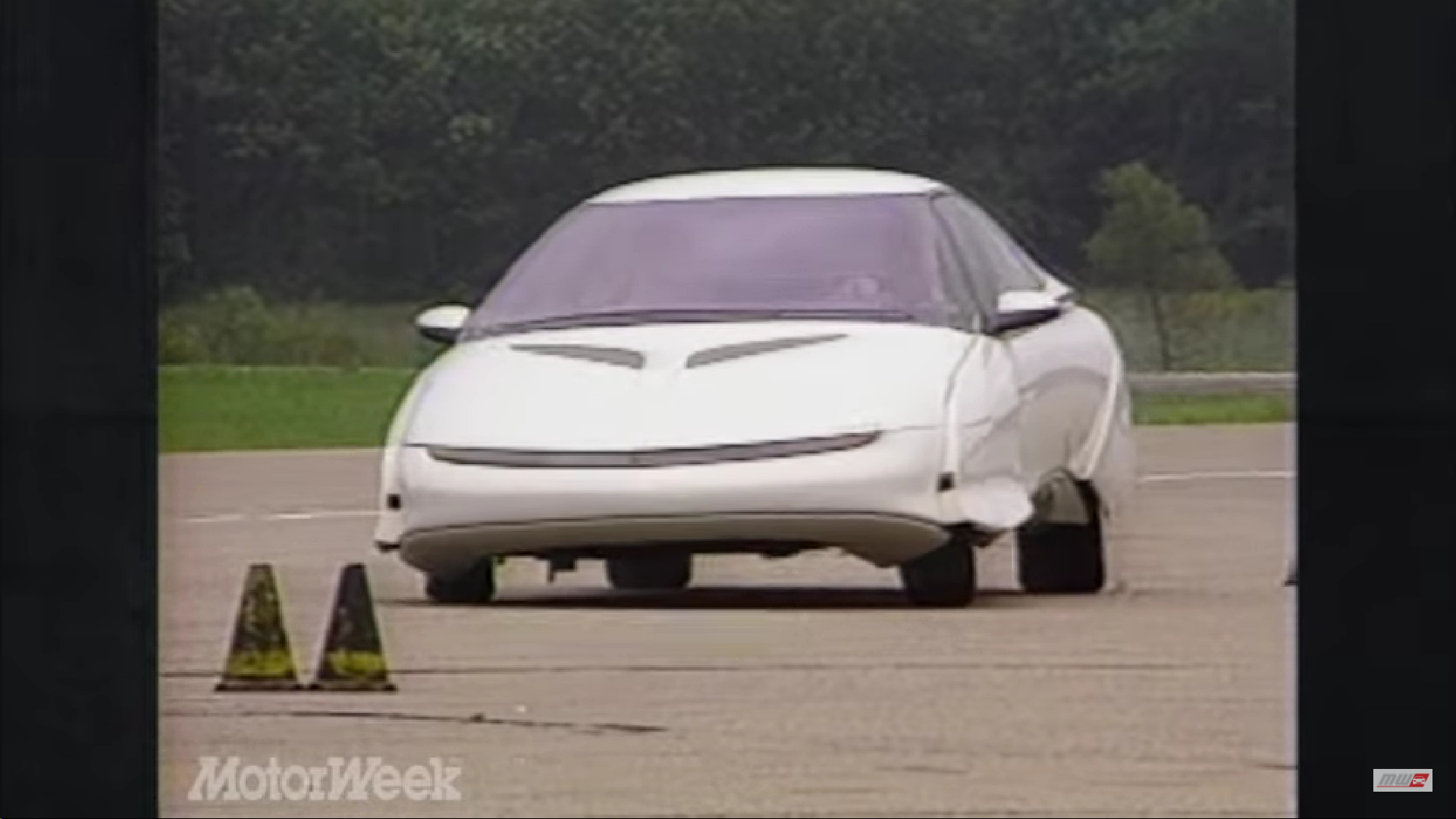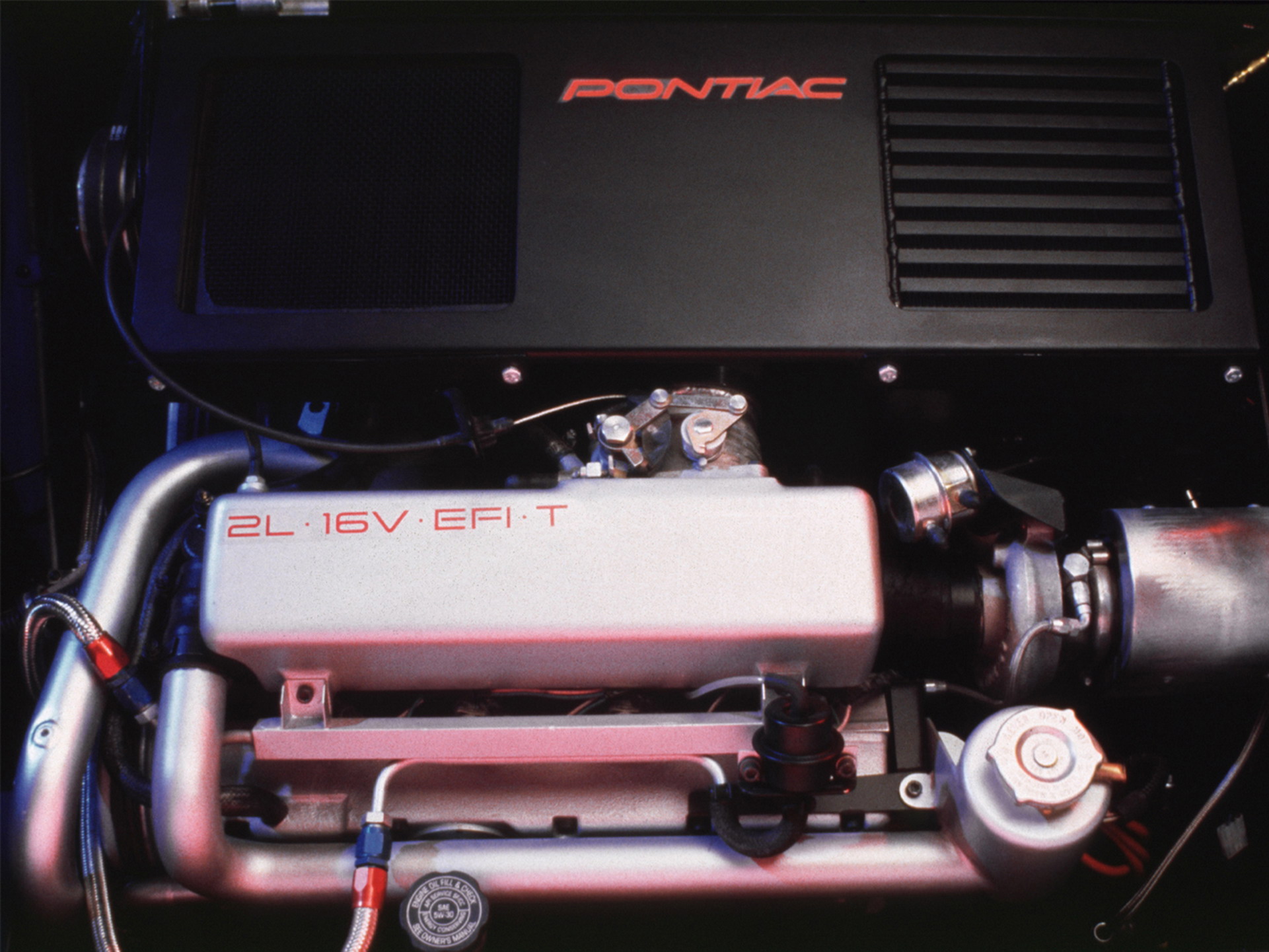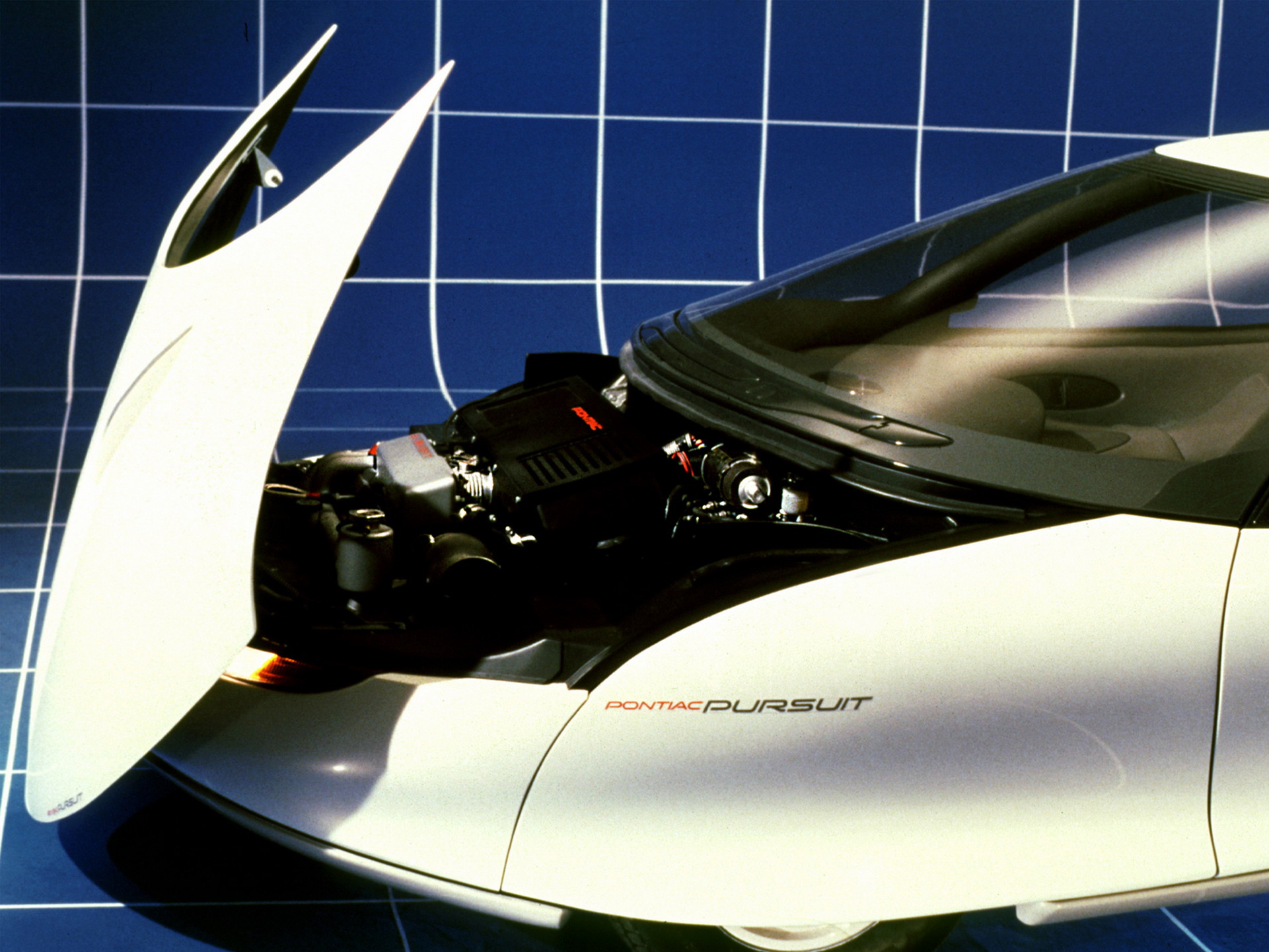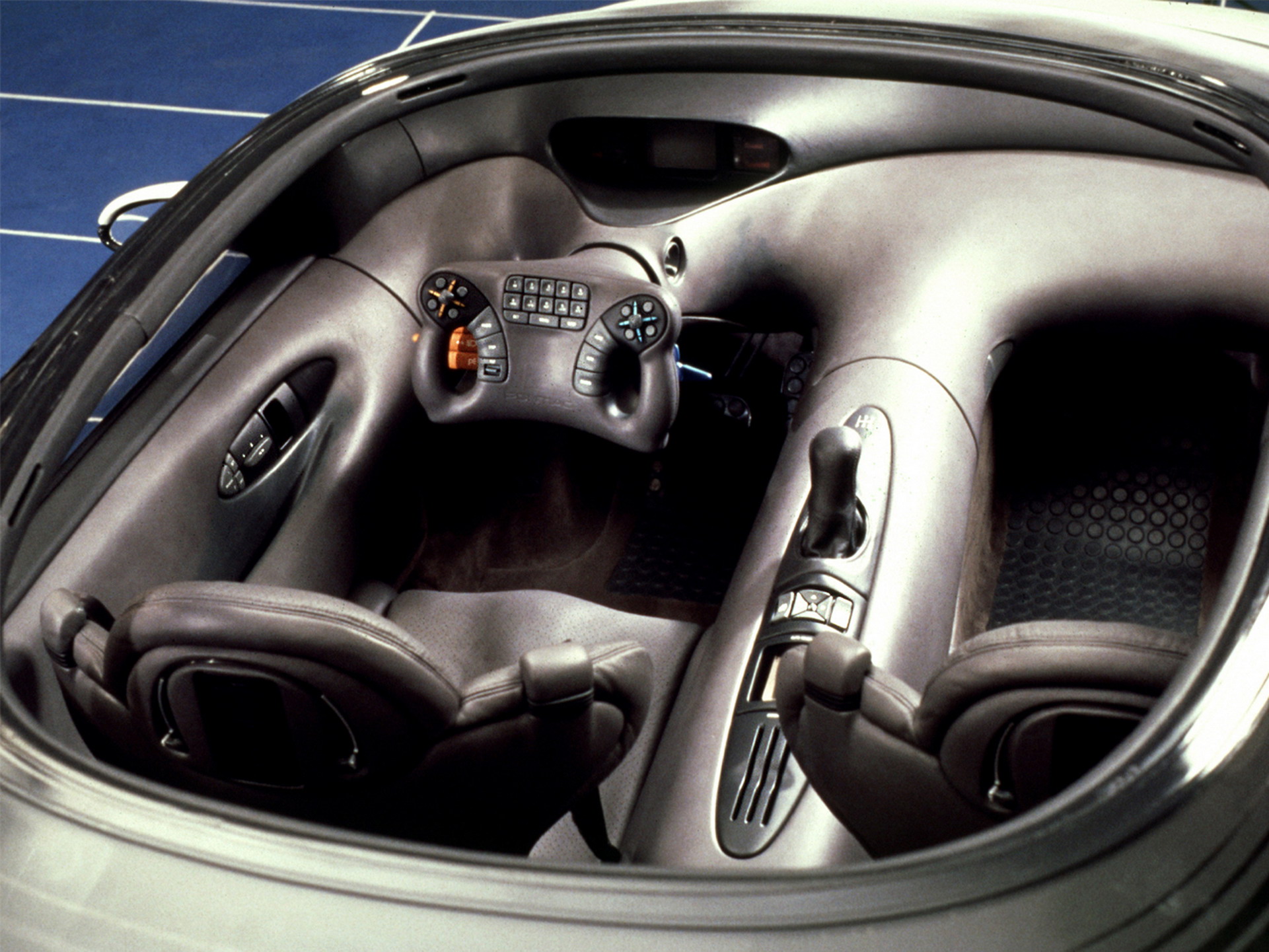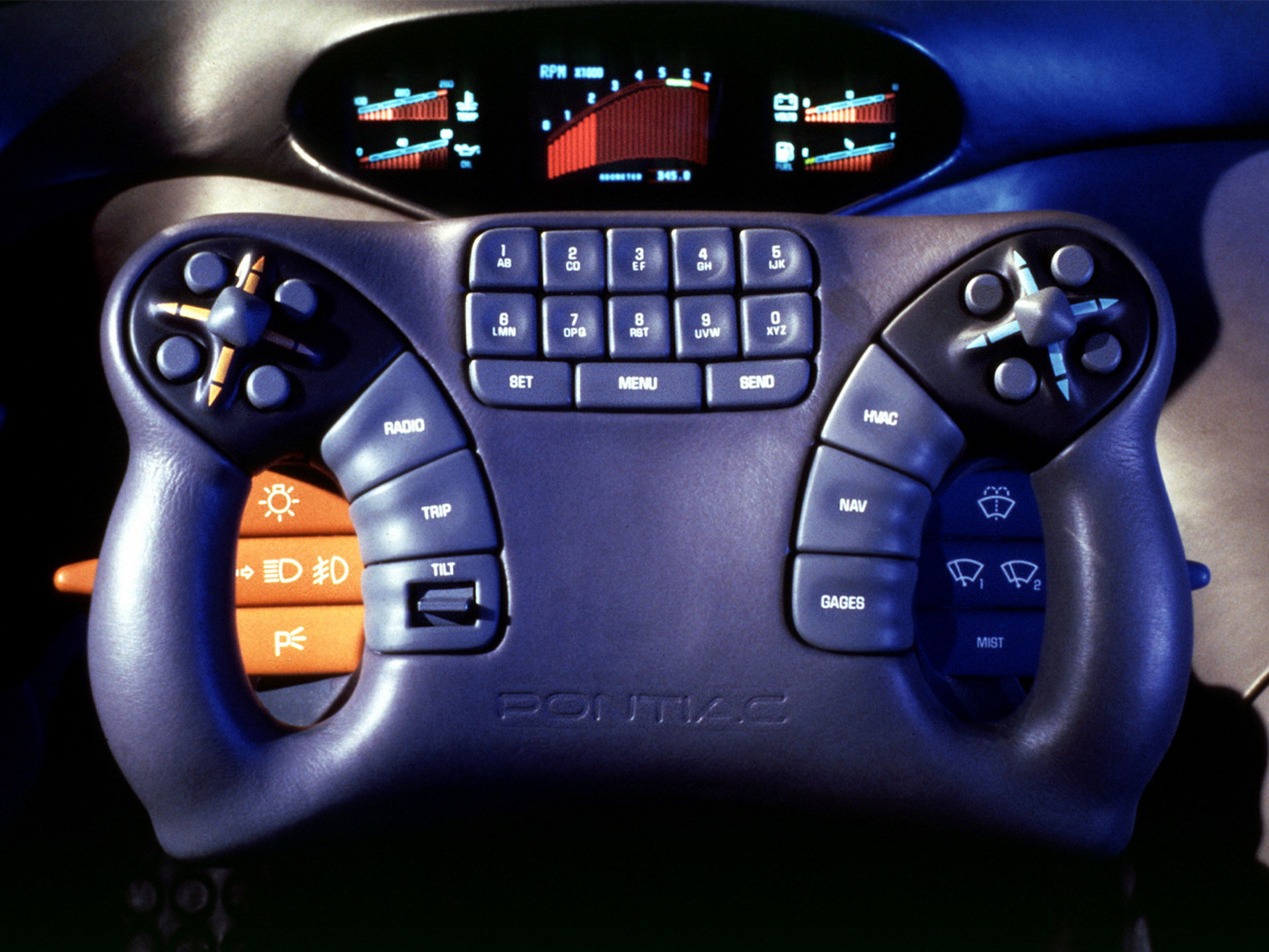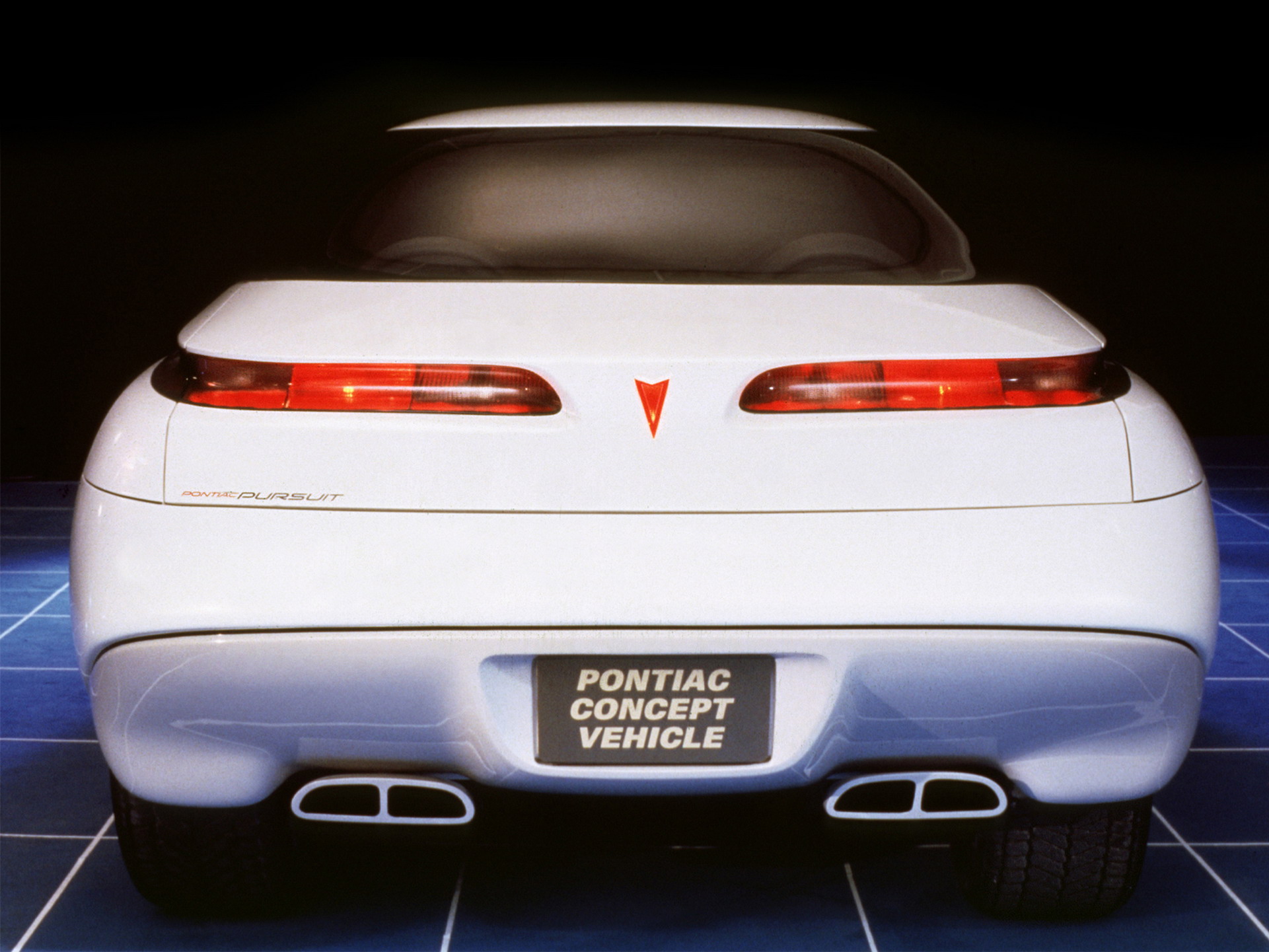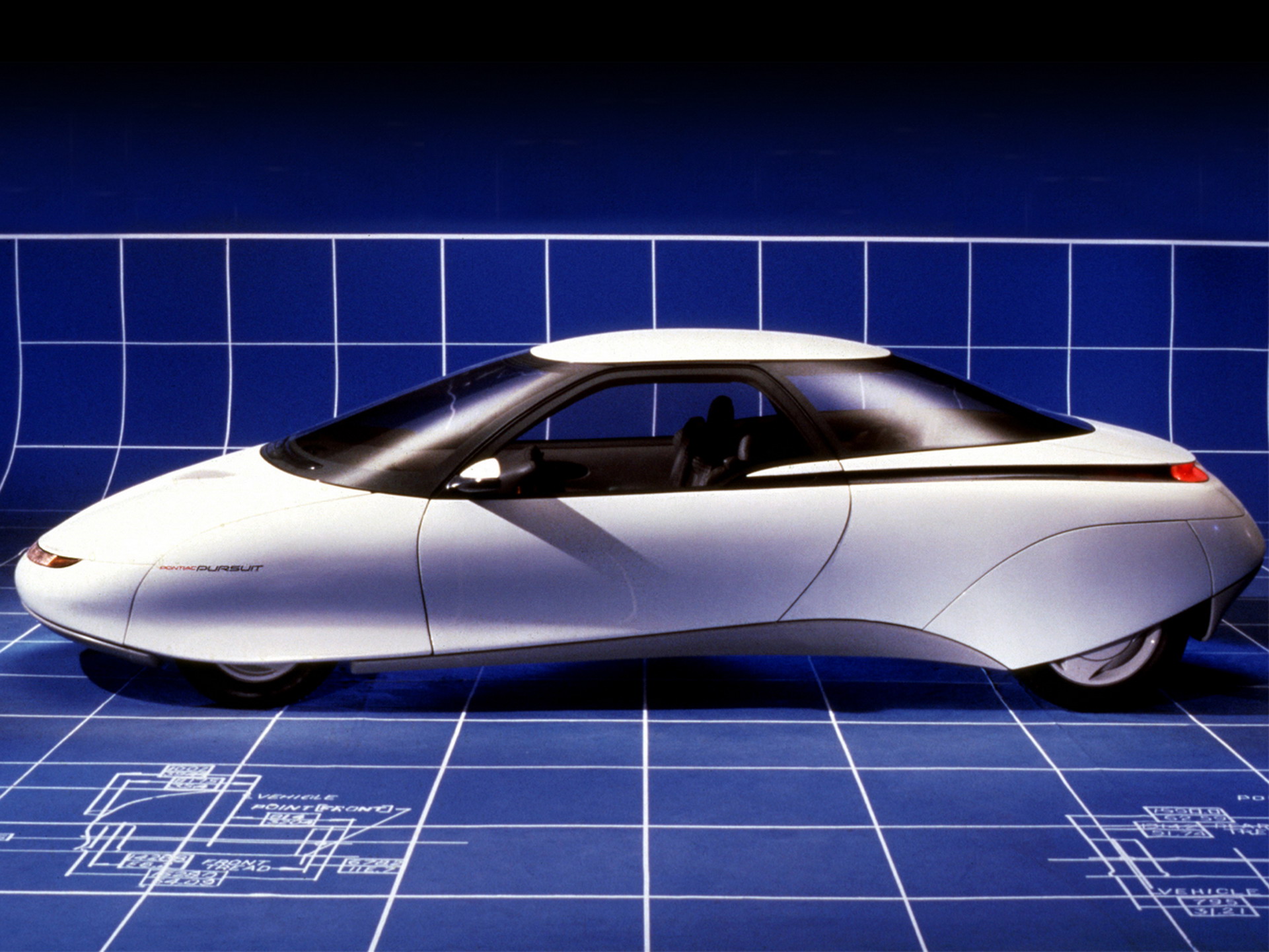At first glance, this Pontiac concept car from the ’80s may appear to be a look at a future that we didn’t achieve. Study it a little deeper, though, and you’ll find that the 1987 Pontiac Pursuit Prototype was a stunningly prescient car.
Designed to predict the car of the distant year 2000, that was closer to then than it is to now. So what did it get right about the future? Well, a lot, actually.
Although the automotive design is only catching up to this car now with the likes of the Mercedes EQXX and other EV concepts, the technology behind it is almost boring now.
Read Also: Cadillac InnerSpace Concept Debuts As A Luxurious, Autonomous Coupe
First, there was the infotainment system, that traded gauges and dials for screens and buttons. With readouts for everything from temperature to speed, this is exactly the technology that automakers are tripping over themselves to sell us now. The only thing Pontiac got wrong was how few screens it thought consumers would want, the answer always being more.
It also predicted in-car navigation, TV screens on the backs of seats, and steering wheels covered in buttons. Even the steering wheel’s yoke-like shape has been taken up by Tesla, though the reception has been mixed.
The Pursuit Prototype’s electronic four-wheel steering is also in vogue again, with the likes of the GMC Hummer EV putting the Pursuit’s crab mode into practice. Pontiac may, though, have been a little optimistic about the likelihood of a steer-by-wire system coming to the world, as automakers are still struggling to make that feature mainstream.
Under the hood was perhaps Pontiac’s biggest called shot. The engine was a 200 hp (203 PS/149 kW) turbocharged four-cylinder engine, and boy does that sound like the engine under the hood of nearly every economy car on sale today.
Although it looks like it belongs on the cover of a cheap science fiction novel you’d find in some dusty corner of the library, it’s interesting to see that Pontiac was right about a lot of stuff, it just wasn’t necessarily right about how long it would take to become popular.




